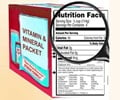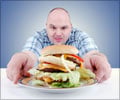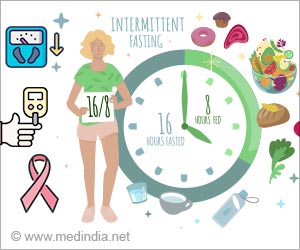Making food choices based on television advertising results in a very imbalanced diet according to a new study.

"The results of this study suggest the foods advertised on television tend to oversupply nutrients associated with chronic illness (eg, saturated fat, cholesterol, and sodium) and undersupply nutrients that help protect against illness (eg, fiber, vitamins A, E, and D, calcium, and potassium)," according to lead investigator Michael Mink, PhD, Assistant Professor and MPH Program Coordinator, Armstrong Atlantic State University, Savannah, GA.
Researchers analyzed 84 hours of primetime and 12 hours of Saturday morning broadcast television over a 28-day period in 2004. ABC, CBS, Fox and NBC were sampled on a rotating basis to develop a complete profile of each network. The Saturday-morning cartoon segment (from 8:00 am to 11:00 am) was included to capture food advertisements marketed primarily to children.
All 96 hours of observations were videotaped and reviewed later to identify food advertisements and specific food items being promoted. Only food items that were clearly promoted for sale during an advertisement were recorded. Each food item was then analyzed for nutritional content. Observed portion sizes were converted to the number of servings.
The article indicates that the observed food items fail to comply with Food Guide Pyramid recommendations in every food group except grains. The average observed food item contained excessive servings of sugars, fat, and meat and inadequate servings of dairy, fruit and vegetables. The situation was similar for essential nutrients, with the observed foods oversupplying eight nutrients: protein, selenium, sodium, niacin, total fat, saturated fat, thiamin and cholesterol. These same foods undersupplied 12 nutrients: iron, phosphorus, vitamin A, carbohydrates, calcium, vitamin E, magnesium, copper, potassium, pantothenic acid, fiber, and vitamin D.
The authors advocate nutritional warnings for imbalanced foods similar to those mandated on direct-to-consumer drug advertisements. They recommend investigating health promotion strategies that target consumers, the food industry, public media, and regulation focusing on a three-pronged approach.
Advertisement
Source-Eurekalert
SRM














